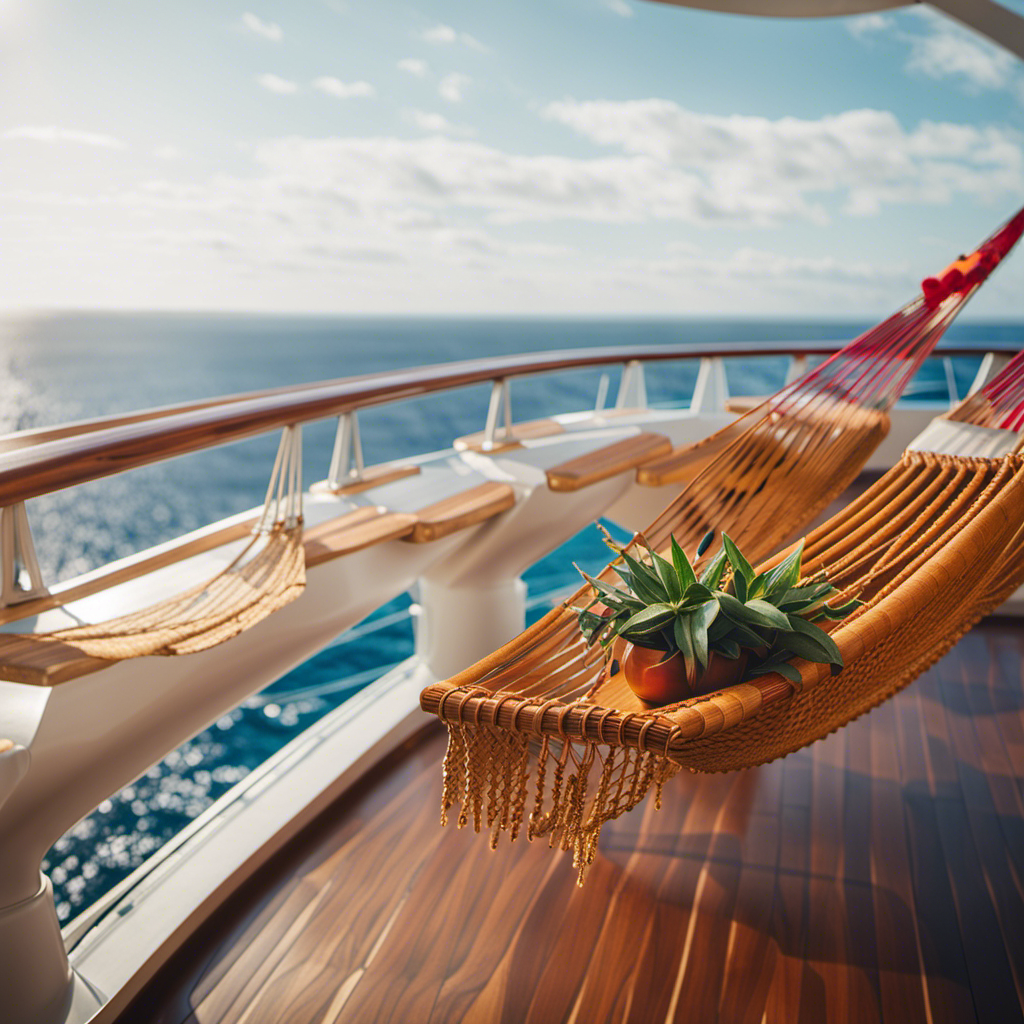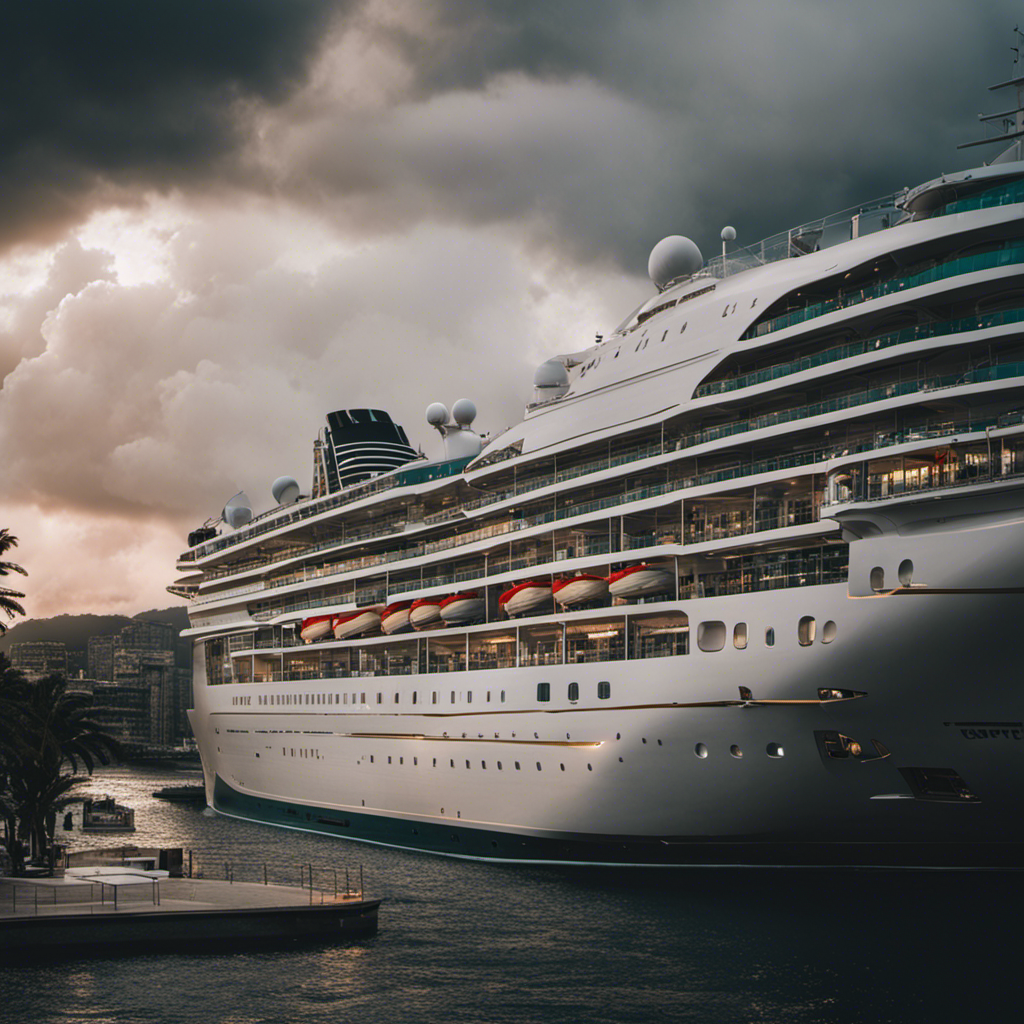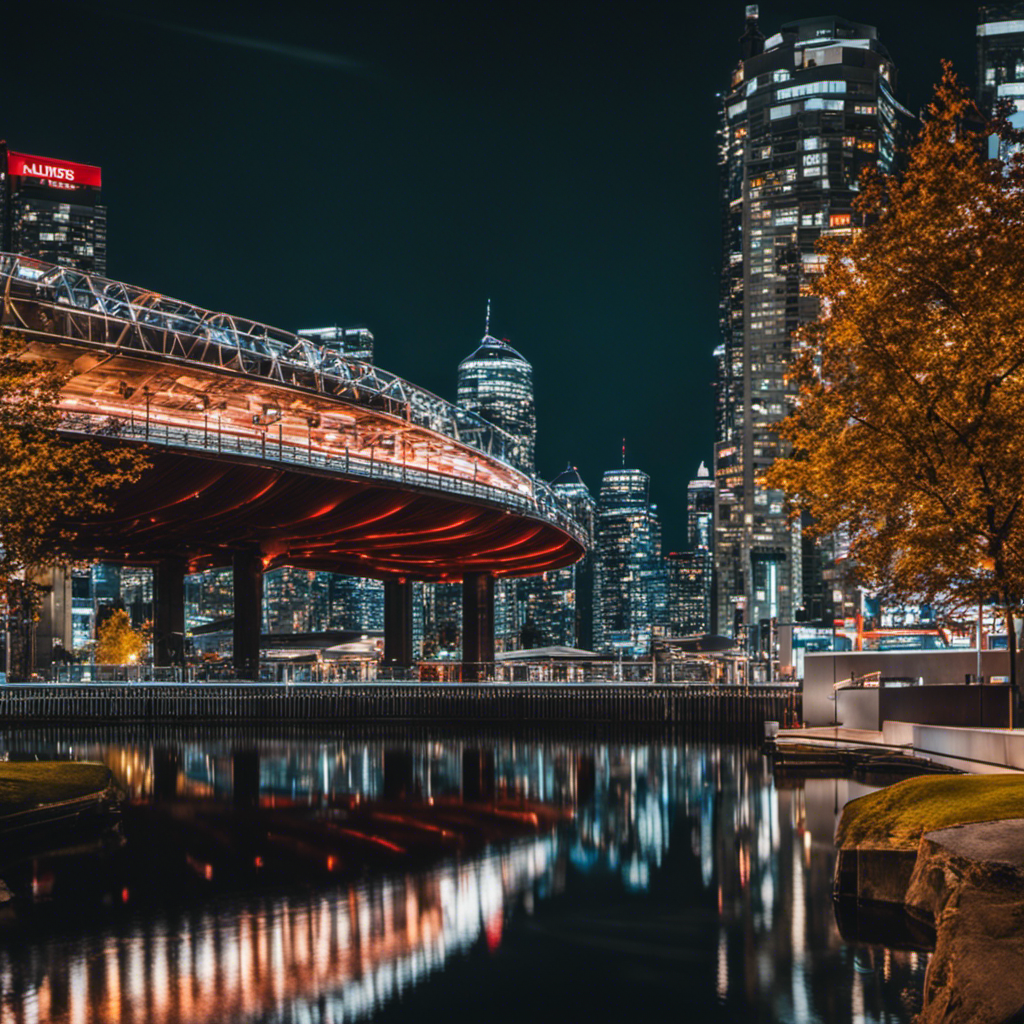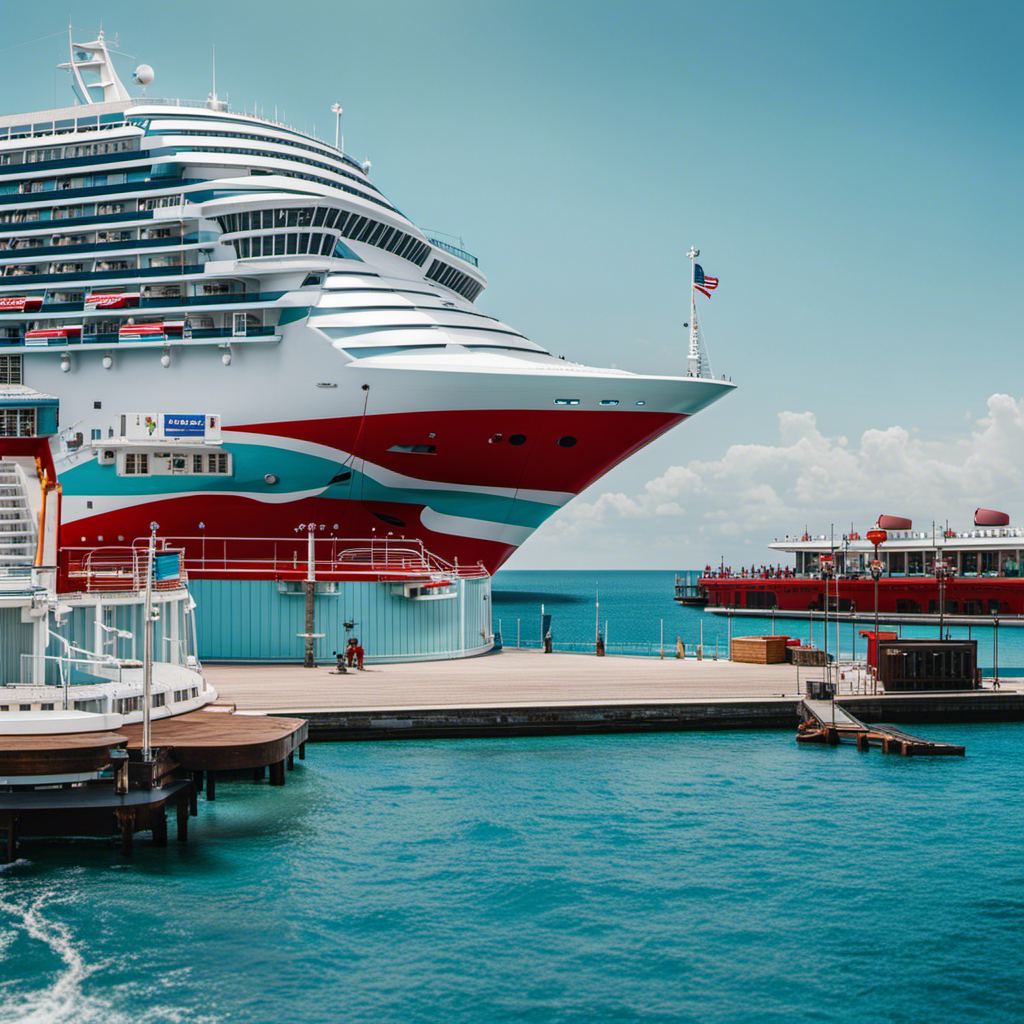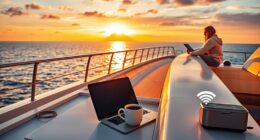Hi there! Just as you do, I find the thought of setting out on a cruise ship journey to be thrilling. Yet, it’s important to recognize that seasickness can greatly diminish the enjoyment. That’s why I’ve put together a collection of dependable suggestions for overcoming seasickness and ensuring a delightful sea voyage. We’ll cover all the essentials, from understanding the causes of seasickness to prevention techniques and effective remedies. So, strap on your life jacket, and let’s dive into the solutions for seasickness together!
Key Takeaways
- Purchase seasickness medications and aids prior to boarding
- Understand the mechanism of seasickness and its risk factors
- Take simple preventive measures to combat nausea
- Seek medical advice for therapeutic approach
Understanding the Mechanism of Seasickness
I understand that seasickness occurs when the brain processes signals from the eyes and inner ear in a conflicting way. This can lead to symptoms such as nausea, dizziness, and vomiting. There are several causes of motion sickness, including the movement of the ship, changes in visual perception, and the body’s inability to adapt to the motion. In addition to these physical factors, psychological factors can also play a role in seasickness. Anxiety, fear, and stress can exacerbate symptoms and make them more severe. It is important to address both the physical and psychological aspects of seasickness in order to effectively prevent and treat it. By understanding these factors, individuals can take the necessary steps to manage seasickness and enjoy their time at sea.
Preventive Measures for Combatting Nausea
Taking simple measures such as focusing on a fixed point in the distance can help combat nausea while on a cruise ship. When it comes to preventing seasickness, there are natural remedies and alternative therapies that can be effective. One option is to sit on an open deck and allow the fresh air to help alleviate conflicting signals in the brain. Another technique is to engage in relaxation techniques, such as deep breathing or meditation, to reduce anxiety and fear. Additionally, avoiding excessive alcohol consumption and consuming light, non-spicy meals can also help prevent nausea. These simple measures, along with other preventive actions like purchasing seasickness medications and aids beforehand, can make your cruise experience more enjoyable.
Effective Medications and Aids for Seasickness
Before boarding the cruise ship, I recommend purchasing effective medications and aids for seasickness. These can greatly help in preventing and managing the symptoms of seasickness. Here are three options to consider:
-
Over-the-counter medications: These include antihistamines like dimenhydrinate and meclizine, which can help relieve nausea and dizziness associated with seasickness.
-
Acupressure bands: These wristbands apply pressure to specific points on the wrist, which is believed to alleviate motion sickness symptoms. They are a natural and drug-free option.
-
Ginger: This natural remedy has been used for centuries to combat nausea and vomiting. Ginger can be taken in the form of capsules, tea, or even ginger candies.
Managing Seasickness During Your Cruise
During my cruise, I found that sitting on an open deck and focusing on a fixed point in the distance helped alleviate my seasickness symptoms. These are effective seasickness prevention strategies that can be considered as natural remedies for seasickness. By sitting on an open deck, you allow yourself to get fresh air and have a clear view of the horizon, which can help stabilize the conflicting signals that your brain receives. Focusing on a fixed point in the distance helps to provide a reference point for your brain, reducing the sensation of motion and alleviating nausea. These simple measures can be tried before resorting to medications and can be effective in managing seasickness during your cruise.
Tips for Enjoying a Smooth Sailing Experience
I always make sure to follow these helpful strategies to enhance my cruise experience and minimize any potential discomfort caused by the motion of the ship. One of the key techniques I use is engaging in relaxation techniques. By practicing deep breathing exercises, meditation, or listening to calming music, I am able to reduce anxiety and fear, which can contribute to seasickness. Additionally, I have found that managing my controlling personality is crucial in preventing seasickness. By relinquishing control and embracing the flow of the ship, I am able to adapt to the motion more easily. It is important to remember that the ship’s movement is natural and part of the cruising experience. By incorporating these relaxation techniques and embracing a more flexible mindset, I am able to enjoy a smooth sailing experience.
| Relaxation Techniques | Controlling Personality |
|---|---|
| Deep breathing exercises | Letting go of control |
| Meditation | Embracing the ship’s movement |
| Calming music | Flexibility and adaptability |
| Visualization exercises | Going with the flow |
| Mindfulness techniques | Trusting the process |
Frequently Asked Questions
Are There Any Natural Remedies for Seasickness That I Can Try Before Resorting to Medications?
Before resorting to medications, there are natural remedies for seasickness that you can try. Simple measures like sitting on an open deck, focusing on a fixed point, and avoiding heavy meals can alleviate symptoms.
Can Wearing Motion Sickness Wristbands Help Prevent Seasickness?
Yes, wearing motion sickness wristbands can help prevent seasickness. They apply pressure to specific acupressure points on the wrist, reducing nausea and vomiting. They are an effective alternative remedy for seasickness.
Is It True That Focusing on a Fixed Point in the Distance Can Help Alleviate Seasickness Symptoms?
Focusing on a fixed point in the distance can alleviate seasickness symptoms by stabilizing brain signals. Visual cues play a crucial role in combating motion sickness. It’s true and effective.
What Are Some Common Psychological Factors That May Contribute to Seasickness?
Common psychological factors in seasickness include anxiety and fear, as well as the mind-body connection. Understanding these factors can help in managing seasickness effectively and enjoying a smooth sailing experience.
Are There Any Specific Relaxation Techniques That Are Effective in Reducing Anxiety and Fear Associated With Seasickness?
Yes, there are relaxation techniques that can help reduce anxiety and fear associated with seasickness. Cognitive behavioral therapy is one approach that can be effective in managing these symptoms.
Conclusion
In conclusion, conquering seasickness is essential for a smooth sailing experience. By understanding the mechanism and risk factors of this common ailment, we can take preventive measures and seek effective medications and aids. Whether it’s focusing on a fixed point in the distance or avoiding heavy meals, there are simple steps we can take to combat nausea. Remember, managing seasickness is crucial to fully enjoying your cruise. So, set sail with confidence and let the waves become your ally, not your foe.

